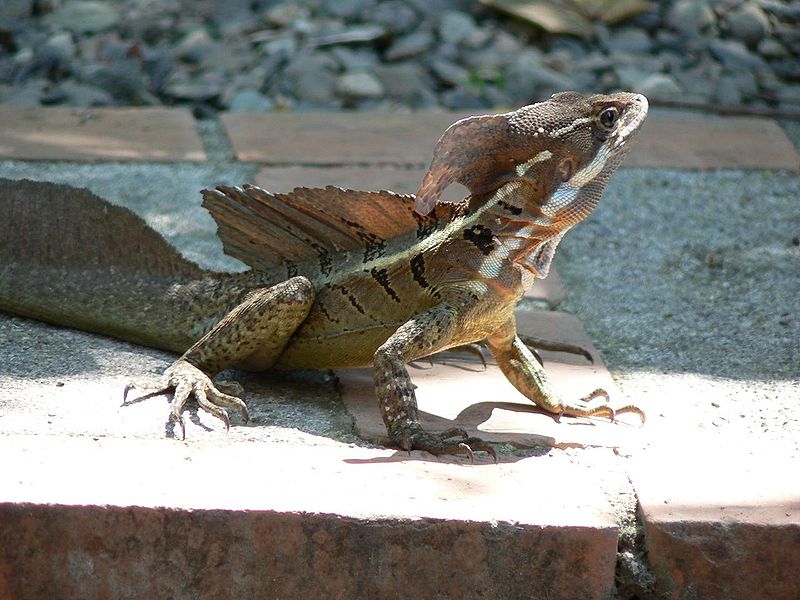Throughout history, there are tales of people walking on water. There are animals today that can walk on water, but humans can’t. It’s not possible.
Water striders (family Gerridae) are insects that have several adaptations to walk on water (including one order that can do the same trick on salt water). They are, of course, very low weight creatures. Their long legs are covered in hydrophobic hairs and they adjust their mass with each movement so their weight is always evenly distributed. These traits allow them to use the chemical properties of the water to slide across the surface.

from http://commons.wikimedia.org/wiki/File:Amenbo_06f5520sx.jpg
Another animal, the basilisk lizards (also called “Jesus lizards) are members of the genus Basiliscus. Members of this genus can run for short distances (about 4-5 meters) across water. They are mostly shown in videos running like this on their two back feet, but can do the same using all four limbs. Using all four limbs can get them a little farther.

http://commons.wikimedia.org/wiki/File:Common_basilisk_in_Costa_Rica.jpg
Unlike the water striders, basilisks run by slapping the water with their foot. Their adaptations include being able to spread their feet wide and small flaps between their toes. The process is known as slap, stroke, and recovery. The lizard (and this applies to some other larger organisms as well) slams their food down onto the water. The stroke creates an air cavity that the lizards pushes against. This cavity is critical to the basilisks ability to run on water. It must lift it’s foot (recovery phase) before the air cavity collapses. [1]
The models suggest that a 2 gram lizard can generate twice the force needed to support their weight on the water. A 500 gram lizard can barely generate sufficient force.
Humans are, of course, much more massive than a few hundred grams and we have none of the adaptations that other species have. So any attempt to walk on water is pretty much doomed to fail. We can’t generate enough force, we can’t do it fast enough, and we don’t have enough surface area anyway.
Technology can help us with the last bit. We have swim fins and the like, but it’s not enough to deal with the lack of force. Our bodies just can’t generate the needed amount of force… on Earth.
And that is the secret of how to walk on water. You have to go someplace where the gravity is significantly lower? How low? Some scientists did some work to find out.[2]
Using the data from the basilisks, the authors suggested that a gravity equivalent to 22% of Earth’s would be the highest that would allow a person to walk on water. Experimental evidence showed that one test subject was able to walk on water at that simulated gravity level (really, click on the paper linked below, the apparatus is worthy of review).
But the real bonus occurred at 16% of Earth’s gravity. Over half the tested subjects would be able to walk on water… on the Moon.
So, that’s the secret to walking on water for a human. It just can’t be done at anything approaching 1g.
___________________________________
[1] Walking on Water: Biolocomotion at the Interface by John W.M. Bush and David L. Hu. Annual Review of Fluid Mechanics. 2006. 38:339–69
[2]Humans Running in Place on Water at Simulated Reduced Gravity
